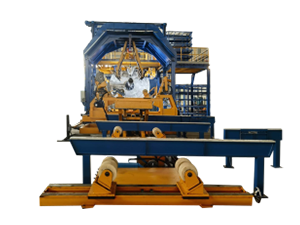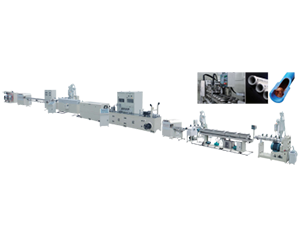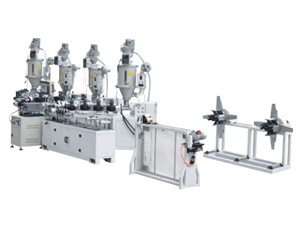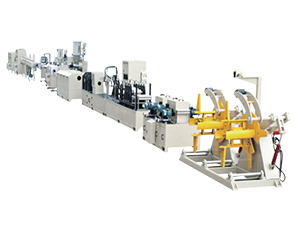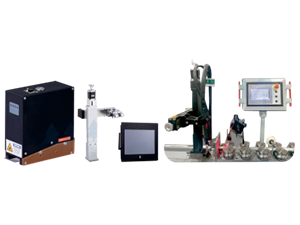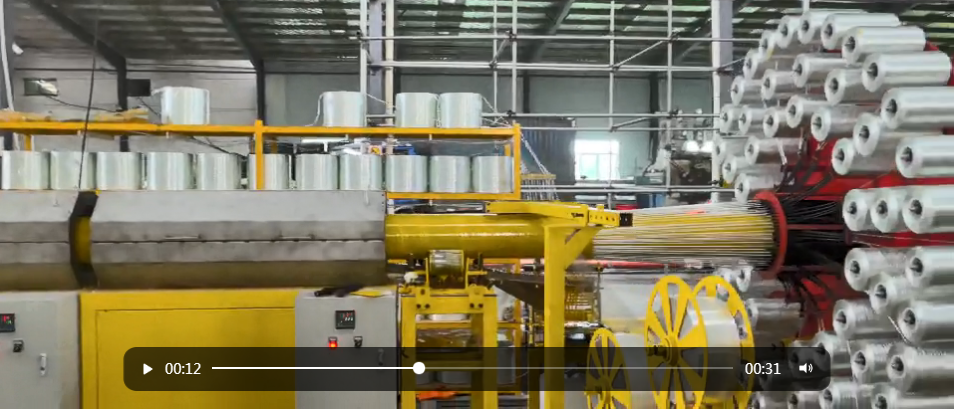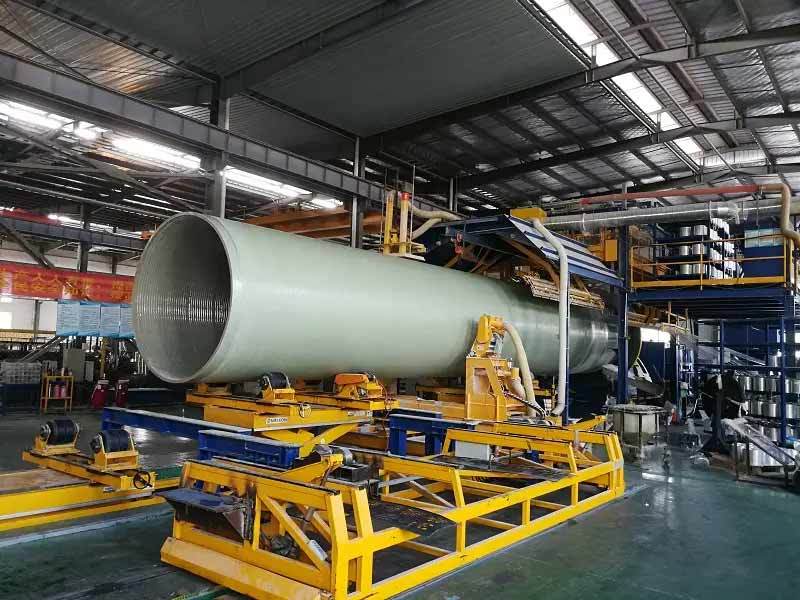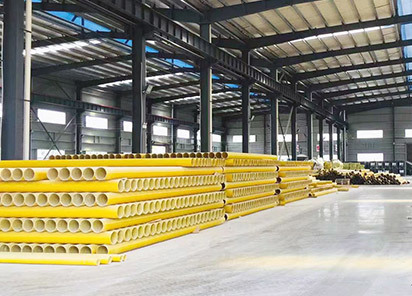Application of medium and low pressure FRP pipelines in oil fields
Aug 20,2024

FRP pipes have gone through the process of hand-made cloth winding and mechanical winding. The diameter has increased from small to large, the pressure has increased from low to high, and the manufacturing technology has been continuously improved. Especially in the promotion and application of oil fields, good economic results have been achieved, and the long-standing serious corrosion problems in the oil and gas gathering and transportation and sewage treatment engineering systems of Gudong Oilfield have been effectively solved. In the past, a variety of measures have been taken to solve the corrosion problem, such as adding chemical agents, coating the inside of the pipeline with anti-corrosion coatings, and cathodic protection, but due to the limitations of these measures, they have failed many times. Since the production of FRP pipelines, the anti-corrosion effect is very obvious, especially the process pipelines of Xinda FRP Company, which have incomparable advantages over other pipes.
2. FRP pipes have excellent characteristics:
1. Excellent corrosion resistance and long service life FRP will not produce ion dissolution in electrolytes. Therefore, it has good chemical stability to water and corrosive substances such as acids, alkalis, and salts of general concentrations, which is enough to solve the corrosion problem of oil field water injection. Its good corrosion resistance gives it an ultra-long service life.
2. Good insulation and heat resistance. FRP pipes are poor conductors of electricity and heat. They will not produce electrochemical reactions and electrochemical corrosion when transporting production fluids. At the same time, they can be used as good electrical insulation materials. The thermal conductivity of FRP pipes is only 0.01 of that of steel pipes, which helps to maintain the transmission speed of the medium during the transmission process and save heat energy costs.
3. Excellent hydraulic properties. The inner wall of FRP pipes is very smooth, and the hydraulic friction coefficient is only 0.0084-0.01; the hydraulic gradient is only 70%-80% of that of steel pipes. Therefore, oil production FRP pipes can save electricity and improve transportation capacity, or use smaller diameter pipes to reduce investment under the same transportation capacity.
4. Light weight and high strength. The density of FRP pipes is 1.6-1.9g/CM3, which is only 1/4-1/5 of that of steel pipes. Pipes of different specifications can be transported in sets, which can reduce handling costs. FRP has high strength, even higher than alloy steel, and therefore has good pressure bearing capacity.
5. Low installation and maintenance costs, short construction period. After leaving the factory, FRP pipes do not need any anti-corrosion treatment. The pipes are light, easy to hoist, short in construction period, and no maintenance costs are incurred during the operation period.
6. Wide range of applications. FRP pipes can be used for oilfield sewage transportation, oil, gas, and water three-phase mixed transportation, and transportation of corrosive media such as acids, alkalis, and salts of general concentrations. They can adapt to working at oilfield sewage temperature (100°C) for a long time, and are suitable for various medium and low pressure levels. They can be used for a long time without corrosion damage.
3. Corrosion status of Gudong Oilfield As the exploitation of the oilfield has entered the secondary and tertiary oil recovery stages, the corrosion problem of steel pipelines has become increasingly prominent. According to the survey and statistics of Shengli Oilfield Co., Ltd., the average corrosion rate of oilfield produced sewage on pipelines is 1-1.7mm/a. Corrosion is related to mineralization. The Gudong Oilfield has high mineralization (12000mg/L) and strong corrosion areas accounting for 69%. A newly built reinforced anti-corrosion pipeline began to be perforated six months after it was put into operation. The three-kilometer-long oil and gas mixed pipeline is updated once a year on average. The service life of the sewage reinjection pipeline without lining anti-corrosion is 4-7 years under the heavy corrosion of sewage total mineralization of more than 20000mg/L. The service life of the high-pressure water injection trunk line is 3-4 years. Corrosion leakage also causes soil and environmental pollution. Although the degree of corrosion is different, it is common in various oilfields. Corrosion alone causes huge losses to the oil industry every year.
The engineering community has been working hard to find new materials to solve the corrosion problem. Domestic and foreign practices have proved that the application of fiberglass pipes is an effective way to solve this problem. Our Gudong Oilfield has generated great economic benefits in the application and promotion.
4. Promotion and application of FRP pipes As the Gudong Oilfield has entered the high water content development stage, the sand production of oil wells has caused serious abrasion of pipelines, greatly shortening the life of pipelines and making it difficult to maintain production management. Under this circumstance, in 1996, we selected the FRP pipes produced by Dongxin Xinda FRP Company on the basis of comprehensive investigation and demonstration for the mixed transportation of oil, gas and water from the No. 85 metering station to Dongerlian. The pipeline is 2,300 meters long, 200mm in diameter, and has a pressure level of about 1.6MPa. After one and a half months of construction, the entire line was connected. The pressure test medium was water, the test pressure was 2.0Mpa, and there was no leakage for 30 minutes. After that, the pressure was maintained at 1.6MPa for 2 hours, and the pressure drop was less than 0.05MPa. After being successfully put into production, it has been in operation for 6 years. Except for the oil well operation and the anchor being worn out once, there has never been any leakage accident, and no protection has been done in 6 years. From the section of the pipe cut off for maintenance, the inner surface is as smooth as a stone, without any signs of corrosion and wear.
Through use, we fully realize that the use of FRP pipes has the following benefits: First, it solves the problem of internal and external corrosion of pipelines; second, it reduces production costs; third, it increases crude oil production and the stability of the conveying medium; fourth, it eliminates daily repairs and maintenance. We have produced a large number of various specifications of pipes with a diameter of DN50mm-700mm produced by Dongxin FRP Company. In more than 5 years, we have accumulated more than 100 kilometers of FRP pipes.
V. The economic efficiency of the use of FRP pipes From the perspective of investment cost, the one-time cost of FRP pipes is slightly higher than that of metal pipes, but the use of FRP pipes can be done without maintenance for many years, without updating pipelines, without anti-corrosion, low comprehensive cost, and obvious long-term economic benefits.
Because the inner wall of the FRP pipe is as smooth as a mirror, the resistance of the medium is reduced. For example, the original Φ273 metal pipe is replaced with a Φ219 FRP pipe, which achieves the same conveying effect. The comprehensive cost after the reduction is 20% lower than that of the metal pipe. If the same diameter FRP pipe is produced without reducing the diameter, the back pressure can be reduced and the crude oil production can be increased. For example, the pipeline reconstruction project of Gudong 12#-14# station constructed by us in 1998 is 1,300 meters long. After it was put into operation, the back pressure dropped from the original 0.85MPa to 0.7MPa, and the crude oil output increased from 15 tons/day to 18 tons/day, and the economic benefits of output increased significantly.
Through our years of application practice, compared with metal pipes, FRP pipes can also reduce various costs such as anti-corrosion costs, installation costs, protection costs, welding cleaning costs, and flaw detection costs. It is an economical, practical and reliable pipe.
VI. Conclusion FRP is a high-quality material. Its promotion and application can solve the corrosion problem of oilfield pipelines, thereby creating good economic benefits. However, not all FRPs are so excellent. It is necessary to mainly select products from manufacturers with reasonable structural design, high-quality materials, reliable reputation and qualifications. Only in this way can the loss caused by pipe quality be avoided.
FRP is a non-magnetic material, which is not easy to detect underground. It is often cut off during construction, thus affecting production. Therefore, it is best to make obvious marks on the ground for underground pipelines to prevent similar accidents.
The application of FRP pipes has solved the corrosion problem of oil fields very well, especially in the later stage of oil field exploitation. With the increase of water content in crude oil, the corrosion problem is becoming more and more serious. The oil production FRP pipes, whether it is a one-time production or the long-term economic benefits brought by FRP pipes, are very considerable. The large-scale promotion of oil production is very beneficial to our oil field construction.
PREVIOUS:
Contact Us
E-mail:
Phone/Wechat/WhatsApp
Address:
A2-1408, Kaichuang Avenue to Tai Plaza, Huangpu District, Guangzhou City, Guangdong Province


